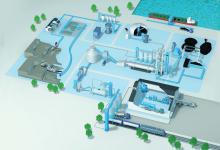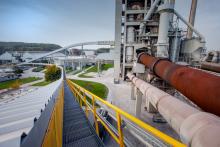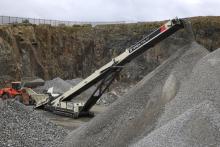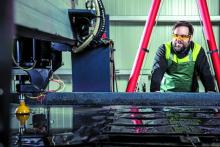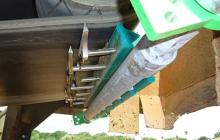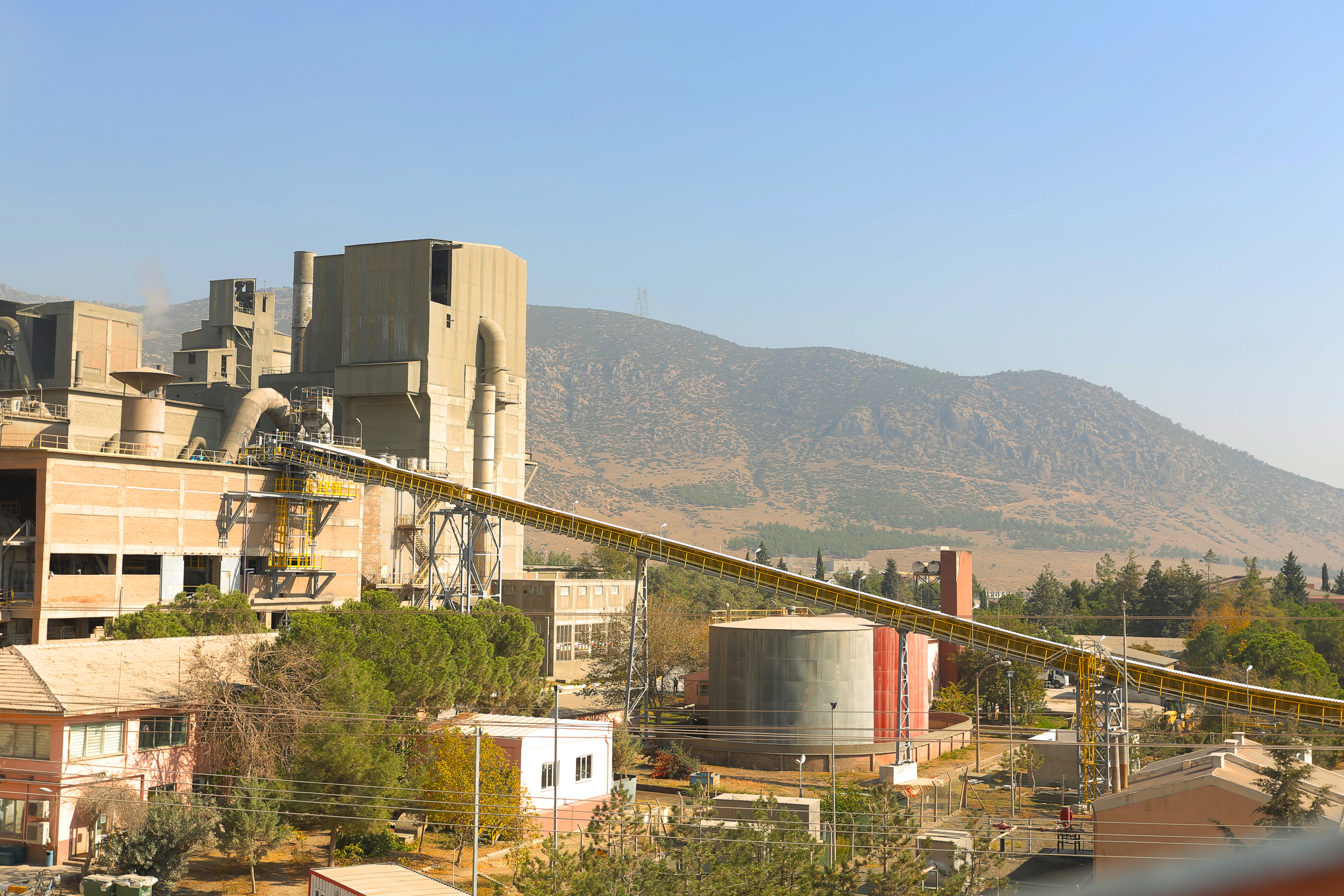
The global conveyors market is lively, with new models galore and eye-catching deployments of proven equipment. Guy Woodford reports.
The Turkish cement market is booming. For the third international airport in Istanbul, the motorway between Istanbul and Izmir and many other large infrastructure, urban redevelopment and residential construction projects, the need for this building material is immense and is expected to grow continuously in the years to come. Such a high level of cement demand offers attractive sales opportunities for manufacturers like the
Making cement is particularly energy-intensive, so a plant operation offering optimal energy efficiency is vital to producers. After Denizli Çimento Sanayii opted for alternative fuels and raw materials (AFR) to ignite the preheater, the calciner and the main burner of its cement plant in West Anatolia, Turkey, the company purchased an AFR system from
“Our industry has always been energy-intensive, but it is also a factor that can be adjusted,” said Berkan Fidan, deputy factory manager at Denizli Çimento Sanayii. It was in 2015 that the company’s representatives came together and decided to produce cement more efficiently and sustainably in order to minimise the use of expensive primary fuels such as coal, gas and oil. The aim was to gain a large part of the necessary energy needed for the plant from alternative fuels. These materials comprise differently composed fuels for the calciner and the main burner, the so-called residue-derived fuels (RDF), as well as shredded waste tyres whose size usually does not exceed 120mm x 120mm.
Denizli Çimento Sanayii’s existing cement plants had not been designed for this. “We needed a partner who could supply and install a single-source solution. The different materials were to be stored, mixed and conveyed to the preheater tower and the main burner within this system,” said Güngör Aydin, plant project manager at Denizli Çimento Sanayii. “In the past, BEUMER had installed a bucket elevator in the plant for a different project, and we are very satisfied with it.”
The contract for the BEUMER AFR system was signed only one month after the BEUMER Group had first received the customer’s enquiry in October 2015.
In order to support producers of cement in the alternative fuels and raw materials field, BEUMER Group has developed a complete business segment dedicated to AFR systems. “Our know-how and our tailor-made systems permit us to offer optimum support to our customers,” said Michal Hrala, managing director at BEUMER Group Czech Republic. “We have years of experience and we always consider our customers’ specifications. As a system provider, you have to be able to supply and install the entire chain from acceptance and unloading of the delivery vehicle, to the storing, conveying and feeding process of the solid alternative fuels for the specific user. A single source can supply the entire system to the end customer who therefore only needs one contact like BEUMER.”
In May 2016, CTN Makina, a supplier approved by BEUMER, manufactured all of the steel components for Denizli Çimento Sanayii’s BEUMER AFR system and started assembling both the imported components and those manufactured on site. BEUMER Group installed two conveyors, 206m and 190m long, as well as corresponding equipment for the two lines. Each pipe conveyor reaches a capacity of 15tonnes/hour.
BEUMER Group also took care of the project planning of the storehouse and the required equipment as well as numerous conveyors and supply lines. The OEM also handled the supply of mechanical equipment and the steel structure, the assembly and commissioning. Furthermore, BEUMER Group installed two containers with discharge devices in front of each pipe conveyor, ensuring an optimum mixture of the fuels. A container for distribution is also installed at the end of each conveyor.
“During the constructive dimensioning of this system we were faced with a particular challenge. Since the cement plant is located in an earthquake-prone area, we had to develop the system accordingly,” recalled Hrala.
In October 2016, barely one year after the contract was signed, the commissioning of the system took place. “We are very satisfied with the single-source system from the BEUMER Group,” Güngör Aydin concluded.
The additional 15,500sq ft. purpose-built facility incorporates a bespoke pre-treatment facility, preparation area and three independent paint booths.
Telestack managing director Martin Dummigan said: “Our investment in our surface finishing process is necessary to support our company’s growth. Central to our long-term growth strategy is the future-proofing of our facility so that we continue to provide an extensive range of world-class products. Critical to this, is improving our product cycle-time through the factory, increasing manufacturing and final assembly capacity, protecting our employees by improving plant safety and ultimately ensuring a high-quality finished product delivered to our customer. We are investing millions into our factory over the next 18 months and our continued focus is on leading the market with quality and innovative products.”
Telestack said the environmental benefits of the tailor-made paint facility will reduce waste by over 90%. Along with the additional dust extraction, noise control and LED lighting systems, the environmental improvements at the site go well beyond all legal requirements. The relocation of the painting facility also helps improve the cycle time of the product through the factory, improving plant efficiency, increasing capacity, and helps provide a safer working environment due to the significant reduction in site traffic and the elimination of manual handling.
SUPERIOR’S GIANT TELESTACKER CONVEYOR
The conveyor has a stockpiling capacity of 363,000tonnes, said by Superior to be 30% more than any other telescoping conveyor on the market. According to Superior, the company’s solution is less than half the cost of a fixed or stationary tripper conveyor with the same capacity.
In addition to high capacity frac sand applications, operations that may benefit from a longer unit include sites that need to build inventory with large tonnage stockpiles and shipload applications. Superior says a 64m telescopic conveyor will fill a vessel hold more completely than shorter models.
The state-of-the-art paint facility is only one part of the company’s long-term strategy to expand production in line with increasing demand in terms of product, range and customised solutions. Commenting on the investment, Telestack commercial director Malachy Gribben said: “Our global business continues to expand and we are preparing for sustained growth. Our ultimate aim is to ensure the delivery of a quality and innovative product, on time and within budget. We want to ensure that each and every one of our customers is a happy customer and that they will continue to choose the Telestack brand and recommend us to other customers. We look forward to another exciting and vibrant year for Telestack and our customers in 2018.”
Quality has always been at the core of the Telestack brand and they have always been renowned throughout the industry for the high quality of their machines. As a UKAS accredited company, ((ISO 9001 (Quality Management), ISO 14001 (Environmental Management), OHSAS 18001 (Health & Safety Management)), the Telestack Integrated Management System (IMS) ensures that anything which has an effect on overall business performance is monitored, actioned and improved as a natural part of its business culture.
The Telestack brand has naturally evolved over the years into two specialist divisions – Telestack Aggregates and Mining and Telestack Ports and Inland Terminals. Telestack has a global proven record in a range of applications including quarrying, mining, stockyard management, ports and inland terminals, power stations, rail yards, steel mills, cement kilns and many other bulk material handling industries.
Singleton Birch, a leading UK independent provider of quicklime and chalk products, has resolved a significant fugitive material problem by implementing state-of-the-art containment and dust suppression on one of its primary limestone conveyors at its processing facility in Barnetby, North Lincolnshire, England. After finding that an estimated 10-20% of material load was spilling along the belt path, Singleton Birch turned to
Producing around 1.5 million tonnes of limestone and chalk a year, Singleton Birch supplies products and services for steel production, land stabilisation, acid neutralisation, water treatment and building mortars. The company’s limestone is extracted from its Melton Ross Quarries in Barnetby and transported a short distance to its processing facility.
“The encapsulation and equipment failure issues really took a toll on the system,” said Oliver Whelpton, process optimisation specialist at
According to Whelpton, to maintain normal operation of the system and avoid serious hazards, the area needed to be cleaned by two workers once a week, requiring nearly an entire shift. Before engaging in what he described as a “substantial undertaking”, the system had to be shut down so workers could see. Anyone entering the enclosed area was required to wear personal protective equipment (PPE), including breathing masks with respirators and hooded suits to protect against airborne particles.
Martin Engineering’s plan for Singleton Birch included raising and lengthening the existing chute to create a more robust settling zone. Using 2.5tonnes of steel, a 4m chute extension and tail box was fabricated. The limestone conveyor overhaul integrated Martin ApronSeal Double Skirting HD and an EVO External Wear Liner to protect the chute wall and seal in the dust, with a series of dust curtains at the end.
The new design raised the chute 102mm from its previous position to accommodate the new wear liner. Mounting brackets with jackscrews provided a secure mount, with precision adjustment of the wear liner to reduce spillage. This system closes the gap between the liner and the sealer, thus eliminating abrasion from trapped material without interfering with existing supports. When accompanied by the skirting and clamps, the system forms a tight belt seal, said to deliver outstanding fugitive material control. Special mounting tabs allow the liner and skirt seal to be adjusted or replaced from outside the chute, allowing an unconfined entry space.
In addition to the complete turnaround of the operating environment and its effect on morale, Singleton Birch processing site managers were impressed by the reduced labour costs and improved safety due to external adjustment and replacement of the chute’s wear parts. Operators report the cleaning and maintenance schedule has been adjusted accordingly, freeing up staff for other assignments. The time and cost of replacing the rolling components and chute accessories is also said to be a fraction of what it used to be.
TEREX FINLAY’S NEW TC-100 CONVEYOR


